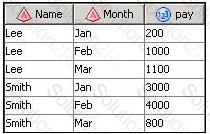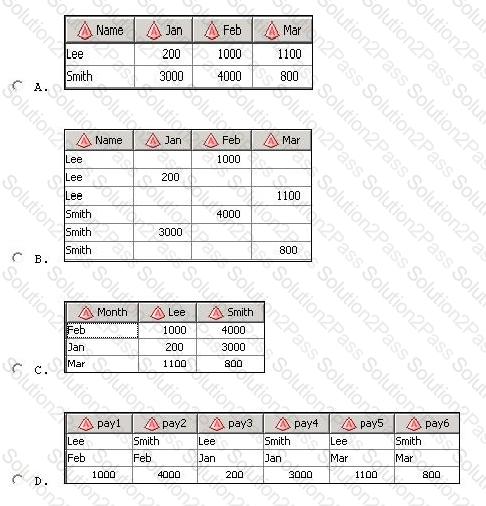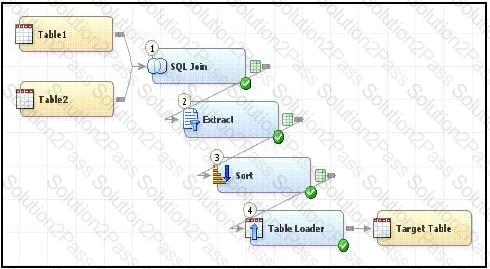A00-260 SAS Institute SAS Data Integration Development Free Practice Exam Questions (2025 Updated)
Prepare effectively for your SAS Institute A00-260 SAS Data Integration Development certification with our extensive collection of free, high-quality practice questions. Each question is designed to mirror the actual exam format and objectives, complete with comprehensive answers and detailed explanations. Our materials are regularly updated for 2025, ensuring you have the most current resources to build confidence and succeed on your first attempt.
The SAS Data Integration Studio SCD Type 2 Loader transformation can do which of the following?
How can you make a SAS Data Integration Studio Generated transformation option required?
Given the table below as a source table for the Transpose transformation in SAS Data Integration Studio:

In the Options tab in the Properties window for the Transpose transformation, if the columns are assigned as follows:
Select columns to transpose (VAR statement): Payment
Select a column for Output column names (ID statement): Month
Select columns whose values define groups of records to transpose (BY statement): Name
Which of the following tables is a possible resulting target table?

Within SAS Data Integration Studio, which one of the following is NOT an option available from the File-> New menu choice under External File grouping?
Which statement correctly defines a System DSN?
Consider the job flow diagram in the display. Assume the inner job has a parameter defined specifying a table name. Which statement is FALSE?

When using SAS Data Integration Studio's SQL Join transformation, which SQL join type can be constructed as either an implicit or an explicit join?
In SAS Data Integration Studio, the default values for generated surrogate and retained keys contain which type of values?
In the following display, can status handling be enabled for both the Extract transformation and the Sort transformation?

Which statement best describes a deployment directory as used in the Schedule Manager in SAS Management Console?
Which statement regarding scheduling SAS Data Integration Studio jobs is true?
Which definition cannot be imported using a SAS Metadata Bridge?
Within SAS Data Integration Studio, which type of expression can be created using the Expression Builder window in the Where tab of SAS Extract transformation? 1) a SAS expression 2) an SQL expression 3) an XML expression 4) a constant
Which statement is true regarding SAS packages created in SAS Data Integration Studio?
A SAS administrator has performed the "Clear Projects" action to remove the lock on a SAS Data Integration Studio job called "Create Tables" that some user has checked out in their project repository. What will be the outcome of this action on the user's project repository?
Which action is performed by the Lookup transformation in SAS Data Integration Studio?
When using the SCD Type 2 load method in SAS Data Integration Studio, which statement is true when a change is detected?
When exporting a SAS package file using SAS Data Integration Studio, where can it be saved?
Which of the following is NOT defined as part of the New Library Wizard?
After creating a stored process from a SAS Data Integration Studio job, how can you test the stored process to make sure it runs correctly?
